
- Blockchain Council
- September 13, 2024
Generative Adversarial Networks (GANs) have emerged as a revolutionary concept in the world of machine learning and artificial intelligence. The power of GANs lies in their capacity to create data that is not merely convincing but virtually indistinguishable from the real thing. In this article, we will delve into the fascinating world of GANs, understanding their working principles, applications, and impact on various industries. Whether you’re a seasoned data scientist or just curious about AI, this article will provide you with a comprehensive understanding of GANs.
What Are Generative Adversarial Networks (GANs)?
Generative Adversarial Networks, or GANs, represent a breakthrough in artificial intelligence by introducing a novel architecture that enables machines to generate new, synthetic instances of data that resemble real data. At their core, GANs involve two neural networks—the generator and the discriminator—that engage in a form of digital tug-of-war. This innovative structure allows GANs to produce remarkably realistic images, videos, and voice recordings, pushing the boundaries of AI’s creative capabilities.
Also Read: Deep Learning vs Machine Learning vs Artificial Intelligence: A Beginner’s Guide
Generative Adversarial Networks (GANs): A Brief History
The origin and evolution of Generative Adversarial Networks (GANs) represent a fascinating journey through the intersection of machine learning, art, and technology. Introduced by Ian Goodfellow and his colleagues in June 2014, GANs have become a cornerstone in the field of generative AI, leveraging the competition between two neural networks—a generator and a discriminator—to produce new, synthetic instances of data that mimic a given distribution.
This groundbreaking concept has spurred a diverse ecosystem of GAN frameworks and architectures, each aiming to tackle different challenges and explore new possibilities. Some notable developments include:
How Do Generative Adversarial Networks (GANs) Work?
The magic of GANs lies in their structure, which includes two main components: the generator and the discriminator. The generator’s task is to create data that is indistinguishable from real data, while the discriminator’s role is to distinguish between genuine and generated data. This process can be likened to a forger trying to create a fake painting, with the discriminator acting as the art expert who tries to detect the forgery.
- Generator: It begins with random noise as input and transforms it into data that mimics the real data’s distribution. For instance, if the goal is to generate realistic images of faces, the generator learns to produce images that look like actual human faces.
- Discriminator: This network receives both real data and fake data generated by the generator. Its job is to accurately classify the data as real or fake. Through training, the discriminator becomes increasingly proficient at this task.
The training process is a delicate balance where the generator continuously strives to improve its creations to fool the discriminator, while the discriminator becomes better at distinguishing real from fake. This adversarial process drives both networks to improve, resulting in the generator producing highly realistic data.
GANs stand out among generative models for their unique ability to generate new data instances that are not just variations of the training data but entirely new creations that are often indistinguishable from genuine data. This has led to their widespread application in fields such as art generation, photo realism enhancement, and even the creation of realistic video game environments.
The intricate dance between the generator and discriminator in GANs illustrates the power of adversarial training, showcasing how competition can drive innovation and learning in artificial intelligence. As these networks train against each other, they unlock new levels of creativity and realism, setting new standards for what machines can achieve in the realm of content generation.
Also Read: Top 10 Machine Learning Projects In 2024
Understanding the Components of GANs: Generator and Discriminator
At the heart of GANs are two critical components:
- Generator: This network takes on the role of an artist, striving to create data that’s indistinguishable from real-world data. It learns from each interaction, improving its ability to generate convincing fakes.
- Discriminator: Acting as the critic, this network evaluates the data produced by the generator, distinguishing between genuine and generated samples.
The interaction between these two networks drives the learning process, making GANs incredibly effective for generating new, realistic data.
GAN Training Process Explained
The training of GANs is a captivating process involving both cooperation and competition:
- Initialization: The journey begins with the generator producing data that, while initially crude, serves as a starting point for learning.
- Iteration: Through a series of cycles, the generator improves its craft, crafting data that increasingly resembles the authentic data set.
- Adversarial Learning: The discriminator, with each iteration, sharpens its ability to differentiate between real and generated data. This ongoing duel pushes both networks towards excellence.
This iterative process continues until the generator produces data so convincing that the discriminator can no longer easily spot the fakes.
Key Terminologies in Generative Adversarial Networks (GANs)
Understanding GANs involves familiarizing oneself with several key terms:
Applications of Generative Adversarial Networks (GANs)
Generative Adversarial Networks (GANs) have seen a wide array of applications across various fields, demonstrating their versatility and power in generating realistic images, transforming sketches into photorealistic images, and even editing photos in complex ways:
- Translation of Images: One fascinating application is the transformation of paintings into photographs, sketches into realistic images, and even changing the types of fruits in images (e.g., from apples to oranges). This capability is made possible through models like CycleGAN, which has been used to convert images of horses to zebras by learning the distinctive features of each domain.
- Text-to-Image Synthesis: GANs have also been employed to create photorealistic images from textual descriptions. This is achieved through models like StackGAN, which can generate images of birds and flowers based on detailed text descriptions, thereby bridging the gap between textual data and visual representation.
- Semantic Image to Photo Translation: Conditional GANs have been used to generate photorealistic images from semantic sketches or images. This application includes creating detailed cityscapes, bedrooms, and even human faces from simple semantic layouts, demonstrating GANs’ ability to understand and fill in complex image details.
- Face Frontal View Generation and Editing: GANs can generate frontal views of faces from angled photographs, facilitating advancements in face recognition technologies. Moreover, GANs have enabled sophisticated photo editing features, such as altering facial expressions, changing hair color, or even the style of the face photo, showcasing their potential in personalized photo editing.
Advanced Applications
- Deepfake Technology: GANs have been instrumental in the development of deepfake technology, allowing for realistic face swapping in images and videos. This technology has applications in entertainment but also raises ethical concerns regarding its potential misuse.
- Culinary Arts: Remarkably, GANs have been applied in the culinary world, where a model was developed to follow a recipe and create a pizza, demonstrating GANs’ potential in understanding and executing tasks in the culinary domain.
- Art and Creativity: The creation of the “Portrait of Edmond de Belamy,” an artwork generated by a GAN that sold for a significant amount at auction, highlights the impact of GANs in the art world. This example underscores GANs’ ability to create complex, creative works that resonate with human aesthetics.
Also Read: Top 10 Must-Have Machine Learning Skills
Types and Variations of Generative Adversarial Networks (GANs)
Generative Adversarial Networks (GANs) are a groundbreaking innovation in the field of machine learning, particularly within the domain of unsupervised learning. They comprise two networks: the generator, which produces synthetic data, and the discriminator, which differentiates between real and generated data. This unique structure enables GANs to generate highly realistic and diverse outputs, from images to text.
Some of the most notable types of GANs include:
- Vanilla GAN: This is the most basic form of GAN, where both the generator and discriminator are modeled using multi-layer perceptrons. The generator focuses on capturing data distribution, while the discriminator evaluates the probability that a given sample is real or synthetic.
- Conditional GAN (CGAN): Here, both networks receive additional information such as class labels, making the model conditional. This allows the generation of data that is more specific to the given condition.
- Deep Convolutional GAN (DCGAN): DCGANs employ convolutional neural networks, making them more effective for tasks that involve image data. They are known for generating high-quality, high-resolution images.
- CycleGAN: Used for image-to-image translation, CycleGAN can transform images from one domain to another without needing paired examples, such as turning summer landscapes into winter ones.
- Generative Adversarial Text to Image Synthesis: These GANs can generate images from textual descriptions, bridging the gap between natural language and visual data.
- StyleGAN: Known for generating high-quality and realistic images, StyleGAN allows for control over the style of the generated images, such as altering facial features in portraits.
- Super Resolution GAN (SRGAN): SRGAN enhances the resolution of images, turning low-resolution inputs into high-resolution outputs without losing detail.
Future of Generative Adversarial Networks (GANs)
The future of GANs appears incredibly promising, with potential applications across various fields. As technology evolves, we can anticipate GANs to produce even more realistic and complex outputs. Here are some areas where GANs are expected to make significant impacts:
Conclusion
As we explore the depths of Generative Adversarial Networks, it’s clear that their potential extends far beyond current applications. By pushing the boundaries of what’s possible in AI, GANs are paving the way for innovations in content creation, data simulation, and even medical research. The journey of understanding and utilizing GANs is just beginning, promising a future where the line between artificial and real becomes ever more blurred. As technology evolves, so too will the capabilities of GANs, leading us into a new era of creativity and discovery.
Frequently Asked Questions
What makes GANs unique in the AI landscape?
- GANs are unique because they involve two neural networks—the Generator and the Discriminator—working against each other.
- This dynamic enables GANs to generate highly realistic data, setting them apart from other AI technologies.
How are GANs used in the real world?
- GANs have a wide range of applications, including but not limited to, generating photorealistic images, creating art, enhancing video game environments, and simulating 3D models for architecture.
- They’re also making strides in healthcare, helping to generate synthetic data for research purposes.
What are the challenges associated with GANs?
- One of the main challenges is ensuring the generated data is ethical and does not infringe on copyrights.
- Additionally, training GANs can be resource-intensive, requiring significant computational power and expertise to manage the complex interactions between the Generator and Discriminator.
What is the future of GANs?
- The future of GANs is incredibly promising, with ongoing research aimed at making them more efficient, ethical, and capable of generating even more realistic and diverse outputs.
- As AI continues to evolve, GANs will likely play a crucial role in shaping the landscape of technology and creativity.

































































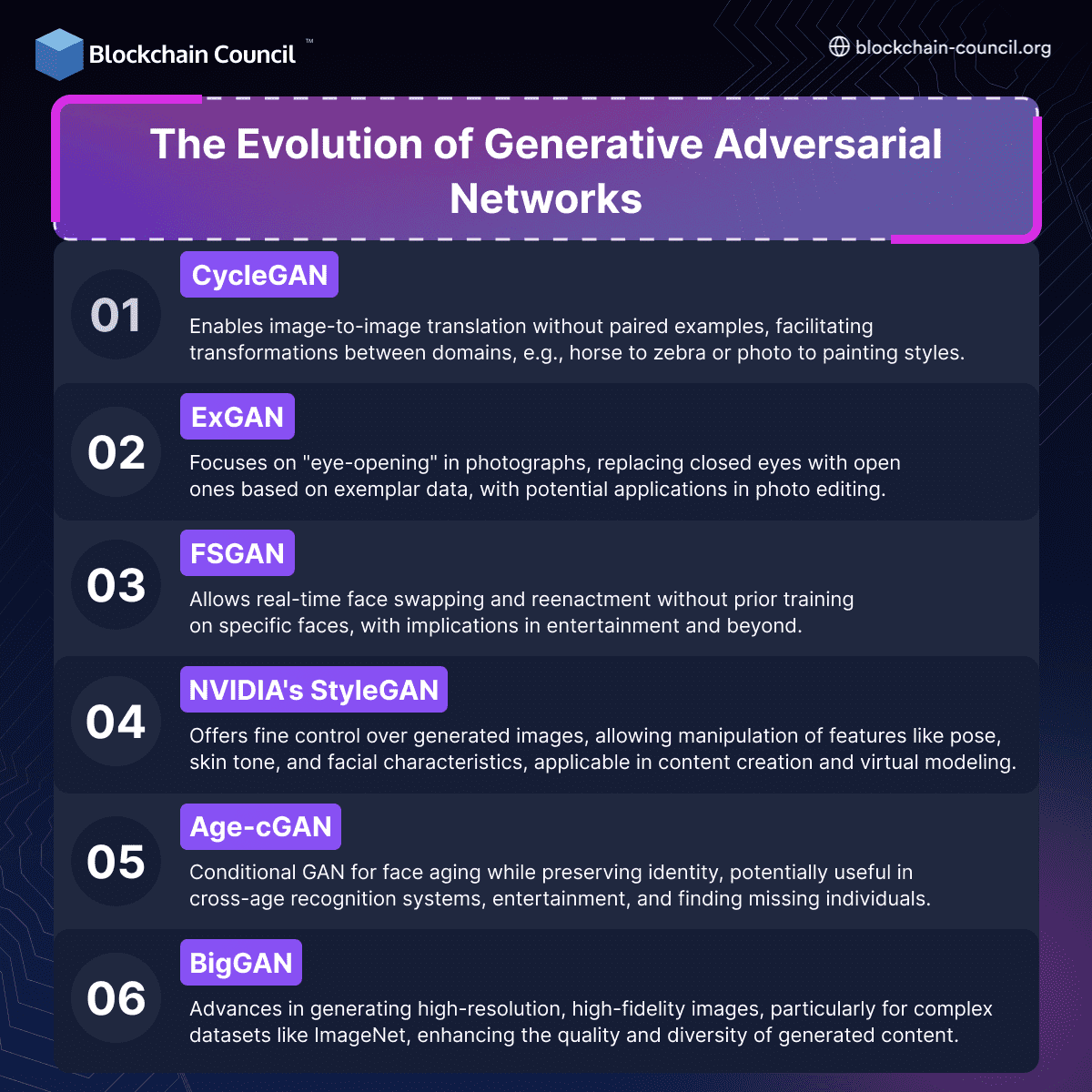
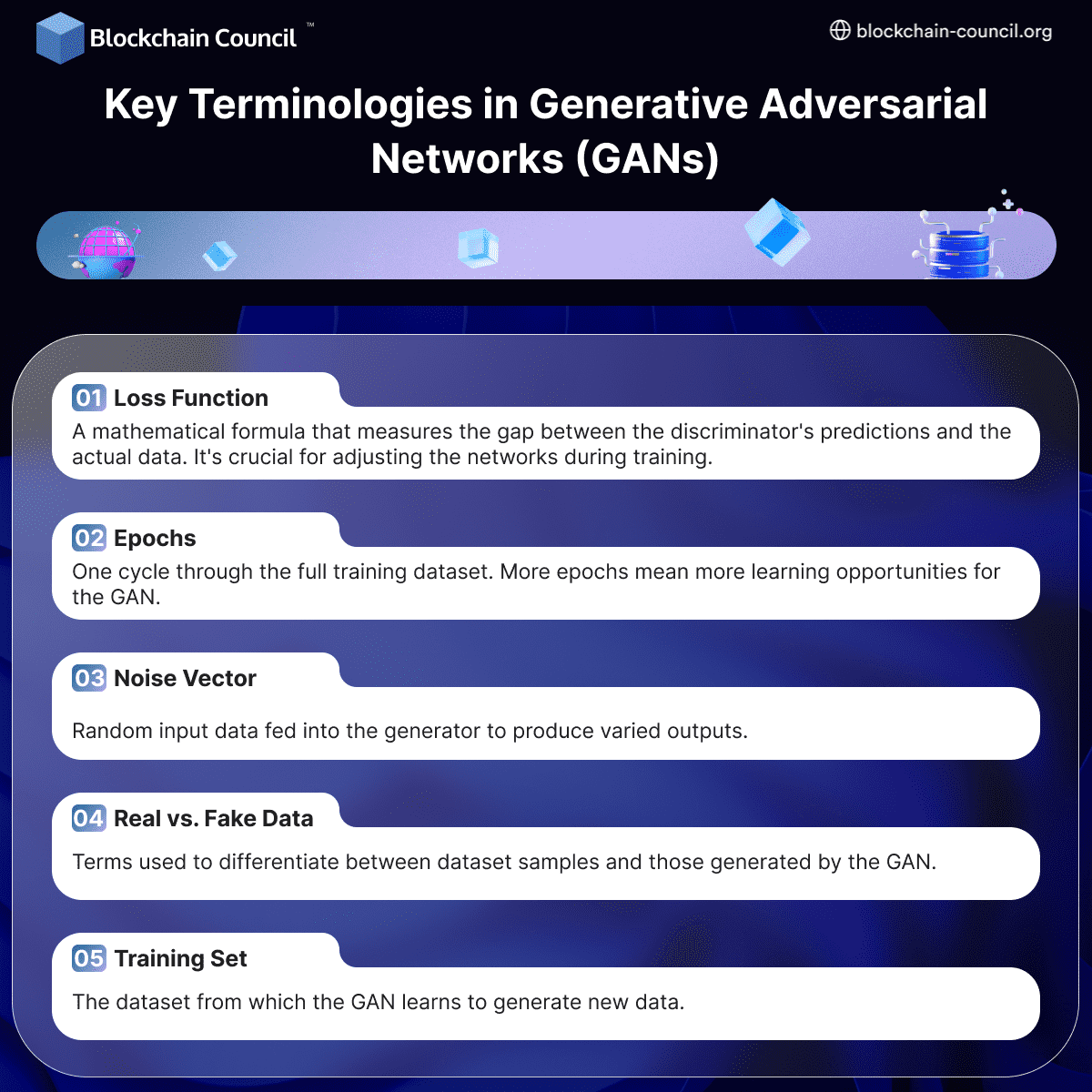
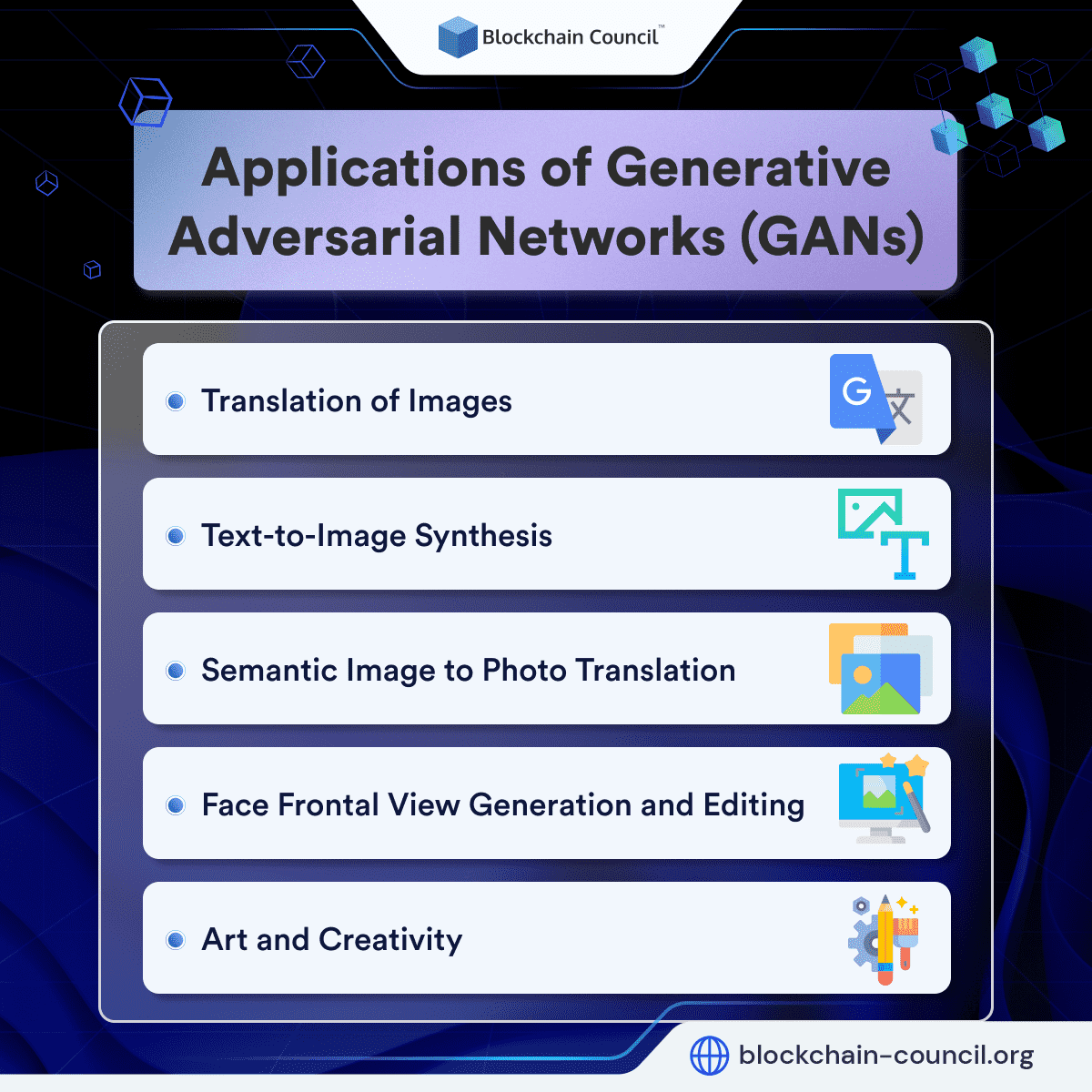
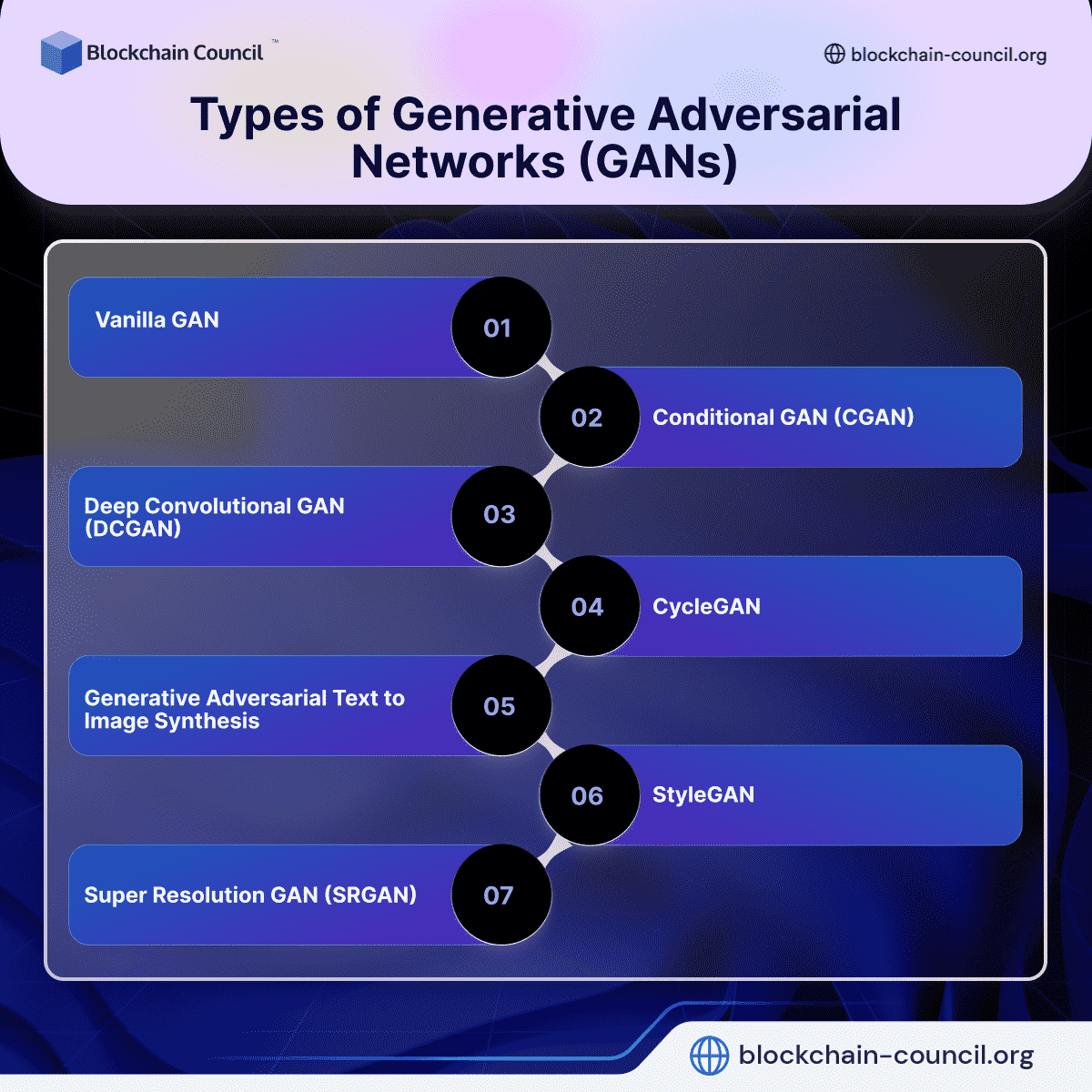
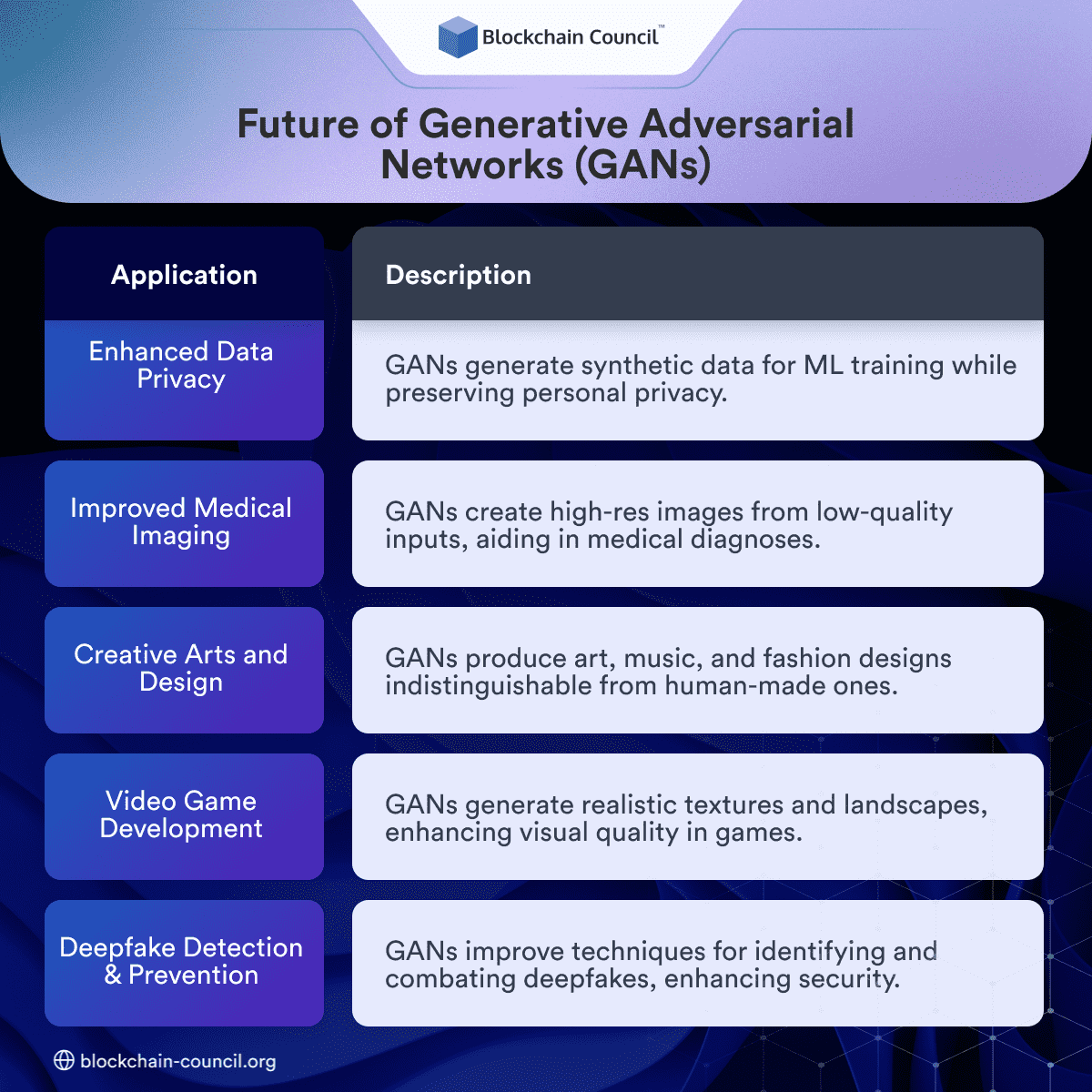




 Guides
Guides News
News Blockchain
Blockchain Cryptocurrency
& Digital Assets
Cryptocurrency
& Digital Assets Web3
Web3 Metaverse & NFTs
Metaverse & NFTs
